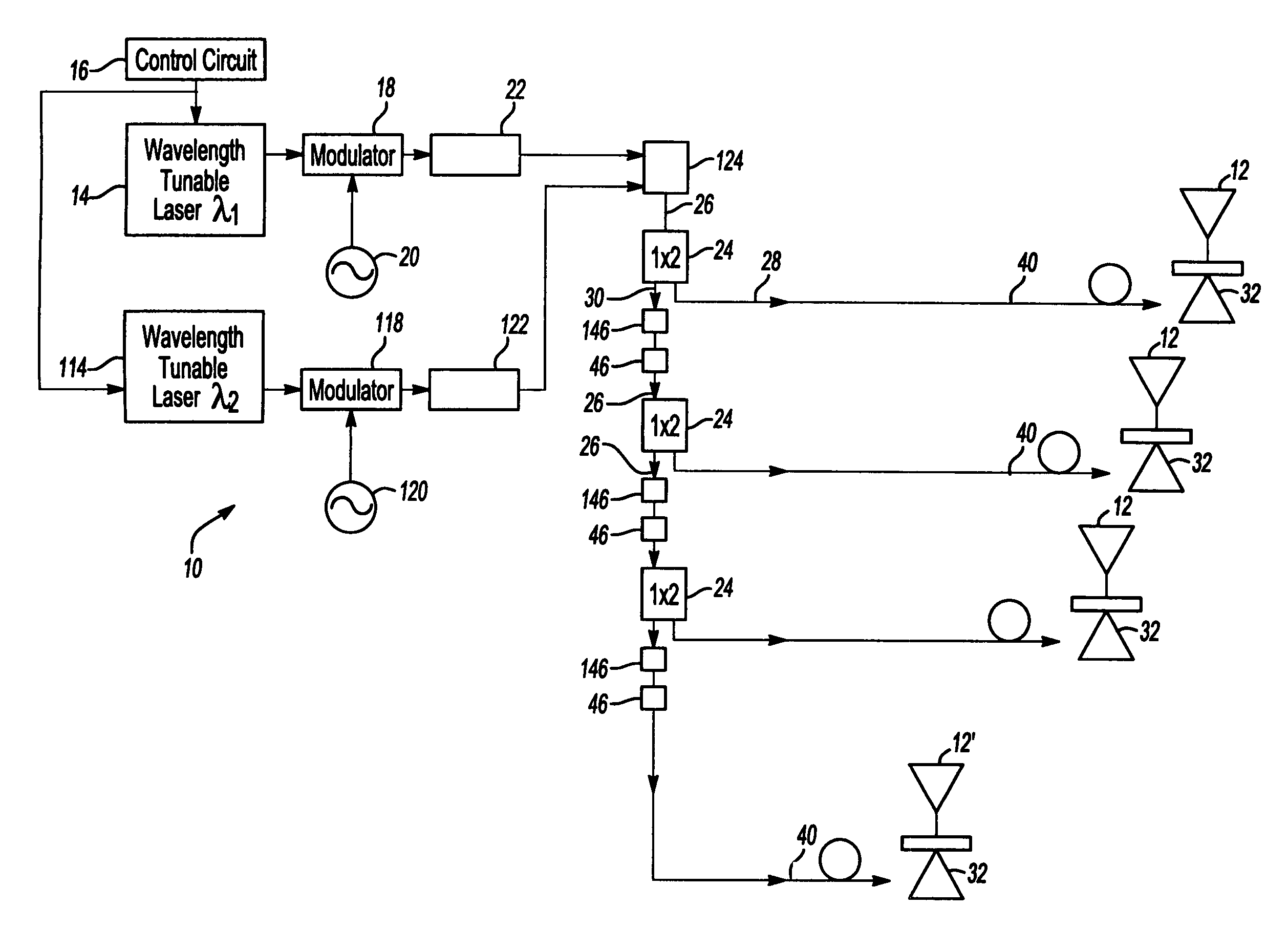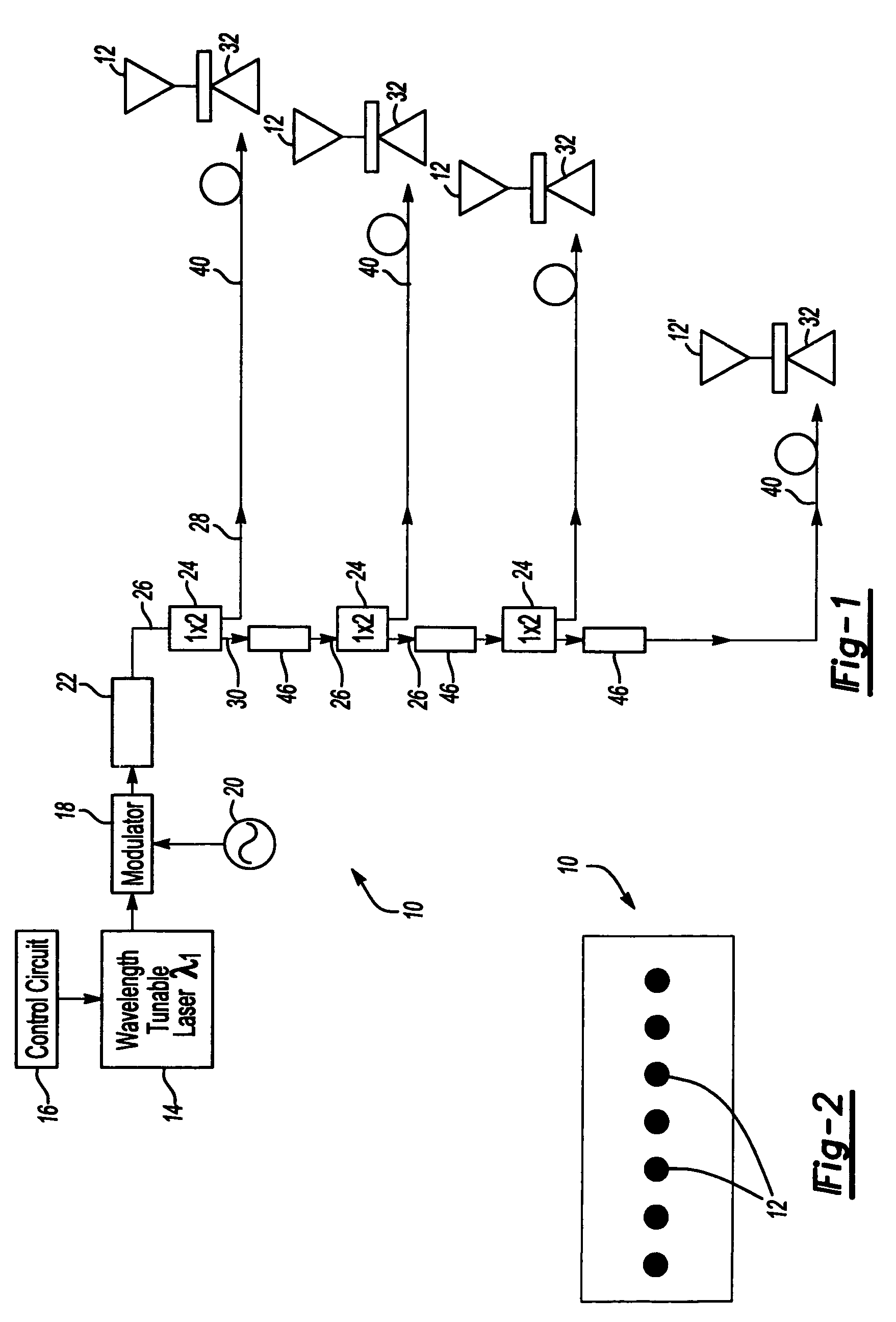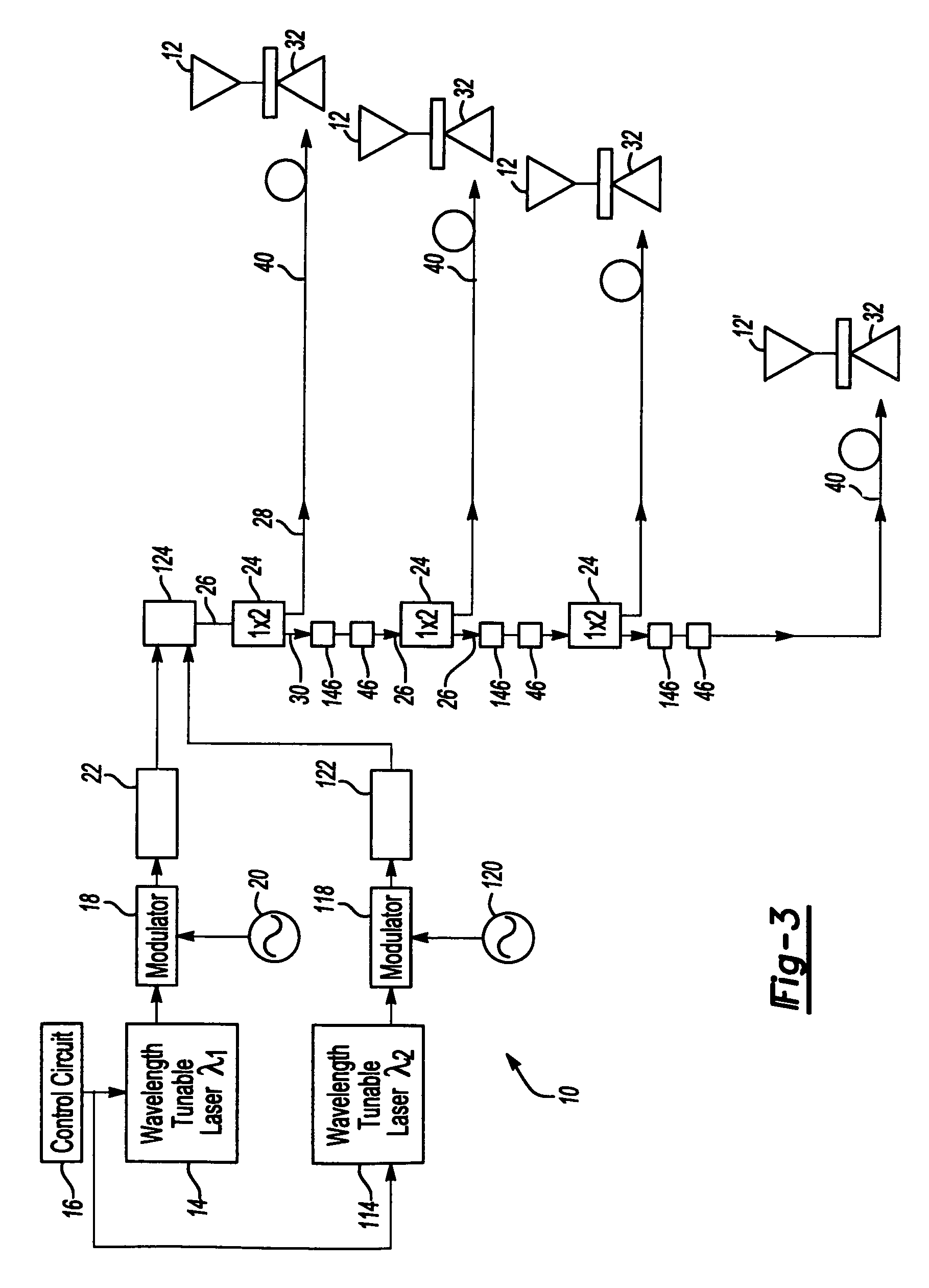Electro optical scanning multi-function antenna
a multi-functional, electro optical scanning technology, applied in the direction of antennas, electrical equipment, electromagnetic transmission, etc., can solve the problems of high cost, high cost, and inability to meet the requirements of variable phase networks, which are not currently known antennas,
- Summary
- Abstract
- Description
- Claims
- Application Information
AI Technical Summary
Benefits of technology
Problems solved by technology
Method used
Image
Examples
Embodiment Construction
[0028]With reference first to FIG. 2, a plan view of an exemplary electro optical scanning antenna array 10 is illustrated as having a plurality of antenna radiators 12. The antenna radiators 12 are linearly aligned with each other and are preferably equidistantly spaced from each other. Although the antenna array 10 illustrated in FIG. 2 depicts seven antenna radiators 12, it will be understood that fewer or more antenna radiators 12 may be utilized in the array 10 without deviation from either the spirit or scope of the invention.
[0029]With reference now to FIG. 1, a block diagrammatic schematic view of the electro optical scanning antenna of the present invention is illustrated. The scanning antenna includes a wavelength tunable laser 14, such as a diode laser. A control circuit 16 controls the operation of the laser 14 to continuously vary the wavelength of the laser 14 within a predetermined range with a center wavelength of λ1.
[0030]The laser 14 has its output optically couple...
PUM
 Login to View More
Login to View More Abstract
Description
Claims
Application Information
 Login to View More
Login to View More - R&D
- Intellectual Property
- Life Sciences
- Materials
- Tech Scout
- Unparalleled Data Quality
- Higher Quality Content
- 60% Fewer Hallucinations
Browse by: Latest US Patents, China's latest patents, Technical Efficacy Thesaurus, Application Domain, Technology Topic, Popular Technical Reports.
© 2025 PatSnap. All rights reserved.Legal|Privacy policy|Modern Slavery Act Transparency Statement|Sitemap|About US| Contact US: help@patsnap.com



